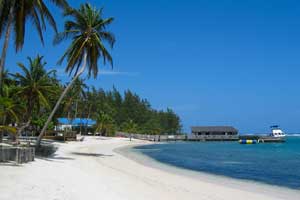Cayman’s Recession among the Worst Worldwide; Hitting Tourism Hard

Cayman’s Recession among the Worst Worldwide; Hitting Tourism Hard
By Michael Klein
Economic activity in the Cayman Islands has dropped for the third consecutive year, according to the 2010 Economic Report released by the Economics and Statistics Office.
Comparative data from the International Monetary Fund and the World Bank shows that Cayman is currently experiencing one of the longest lasting recessions of any economy in the world.
Cayman’s estimated gross domestic product for 2010 fell by 4 per cent compared to the previous year. This economic decline follows a drop in GDP of 7 per cent in 2009 and 0.7 per cent in 2008 in real terms.
In the Caribbean, only Trinidad and Tobago suffered a worse economic decline than Cayman but the recession there began later and so far has lasted for only two years. Jamaica is, together with Cayman, the only economy in the Caribbean that posted a negative GDP in 2008, 2009 and 2010. Worldwide there are only a handful of countries, for example Ireland and Latvia, which saw their economies contract in each of the past three years.
The majority of developed and developing countries witnessed shrinking economies predominantly in 2009 before recovering again in 2010.
However, Bermuda, an island economy comparable to Cayman, has shown a similar economic performance with a contraction of GDP of -0.3 per cent in 2008, -8.1 per cent in 2009, an estimated -4 per cent in 2010 and an expected -0.5 per cent in 2011.
The comparable economic structure together with a large transient population and out-of-control public finances appears to have a similar effect in Bermuda and the Cayman Islands.
In Cayman the economic contraction was exacerbated by both lower population numbers and less demand by public institutions as the government curbed spending to control budget deficits and spiraling public debt.
The significant reduction of Cayman’s expatriate population continued as weak economic activity and higher work permit fees resulted in lower demand for foreign labor, the ESO report said. In total there were 6,000 fewer work permits outstanding in 2010 than in 2008.
At the same time Cayman’s population of 54,400 at the end of 2010 was approximately 4.6 per cent smaller than just two years earlier.
This population decline directly translated into less economic activity, as imports to Cayman fell from a value of $879.4 million in 2008 to $735.9 million in 2009 and $688.3 million in 2010.
The strongest reduction of economic activity affected construction (-24 per cent), wholesale and retail trade (-6.5 per cent), real estate (7.7 per cent) and financing and insurance services (-3.9 per cent), the ESO statistics show.
In the financial services industry the number of mutual funds (-0.9 per cent), insurance licenses (-5 per cent), banking and trust licenses (-7.9 per cent), trust companies (-6.6 per cent) and stock exchange listings (-15.2 per cent) all declined in 2010, in most cases for the second consecutive year.
New company (3.7 per cent) and new partnership registrations (19.9 per cent) in contrast were on the rise. However, the total number of active companies declined by 1.8 per cent to 91,206, where as the number of active partnerships increased by 9 per cent to 10,222, according to General Registry figures.
The tourism sector was one of the few bright spots in 2010, growing by 5.2 per cent with both the number of air arrivals and cruise visitors higher than in 2009, resulting in a total of 1.89 million visitors to ?Cayman in 2010.














